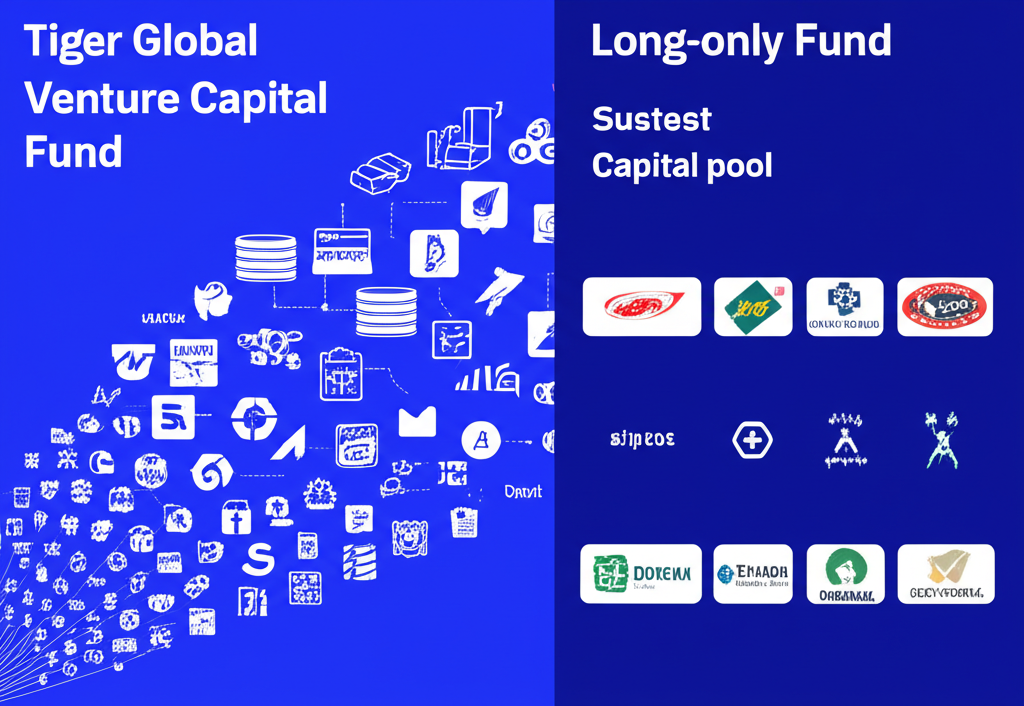Introduction: Tiger Global’s January Snapshot

January 2024 emerged as a defining moment for Tiger Global Management, one of the most consequential forces in modern venture capital and hedge fund investing. Known for its aggressive pace and early backing of tech disruptors, the firm navigated a complex environment marked by large-scale fundraising, strategic rebalancing, and shifting market dynamics. This single month encapsulated a broader transformation—Tiger Global reaffirming its core identity while adapting to a more cautious investment climate. The firm’s actions revealed a calculated push to restore momentum: raising fresh capital, leveraging high-impact private stakes like OpenAI, and signaling a more diversified approach across public and private markets. These moves not only reflect resilience after a turbulent 2022 but also underscore a proactive stance in shaping the next phase of technological innovation.
Tiger Global’s Recent Fundraising: New Capital for New Frontiers

At the heart of Tiger Global’s January activity was a renewed drive to raise substantial capital, a clear signal that the firm is regaining investor confidence after a period of market correction. These fundraising initiatives are more than just balance sheet enhancements—they represent a strategic recalibration aimed at positioning Tiger Global for the next wave of growth. By building a deeper war chest, the firm is preparing to re-engage with high-potential startups while also exploring new avenues in public equities. This dual focus reflects a nuanced evolution: maintaining its bold venture roots while embracing more balanced risk management in an era of higher interest rates and tighter valuations.
The $11 Billion Venture Fund: Strategy and Focus
One of the most notable developments in January was Tiger Global’s progress toward finalizing an $11 billion venture fund. According to reports from Bloomberg, the fund was approaching its target, a strong indicator of enduring trust from limited partners despite past volatility. This massive commitment underscores the firm’s unwavering belief in early and growth-stage technology companies as primary engines of long-term value creation. The strategy remains consistent with Tiger Global’s historical playbook: identify scalable, innovative businesses early and deploy large checks quickly to secure meaningful positions. Sectors likely to attract focus include enterprise software, fintech, digital health, e-commerce, and AI-driven platforms—areas where the firm has previously achieved outsized returns. With venture markets showing signs of stabilization, this fund could play a pivotal role in financing the next generation of tech leaders, especially in emerging markets and underserved geographies where digitization is accelerating.
Long-Only Launch: A Diversification Play?
Alongside its venture push, Tiger Global signaled a strategic expansion with the reported launch of a $1 billion long-only fund. Unlike its traditional hedge fund vehicles, which often employ leverage and short positions, a long-only fund is designed to hold public equities over time, betting on sustained appreciation. This move suggests a deliberate effort to diversify both risk and return streams. After experiencing significant drawdowns in its crossover funds—vehicles that blend private and public investments—during the 2022 market correction, Tiger Global appears to be building a more resilient public market strategy. The long-only approach may appeal to investors seeking exposure to high-quality, profitable tech companies without the volatility associated with speculative growth bets. It also aligns with a broader industry trend of top-tier firms expanding their product offerings to meet evolving institutional demand for stability and transparency in public equity allocations.
| Fund Type | Target Capital (Approx.) | Primary Investment Focus | Strategic Implication |
|---|---|---|---|
| New Venture Fund | $11 Billion | Early to Growth-stage Tech Companies | Reaffirmation of core VC strategy, future tech giants |
| Long-Only Fund | $1 Billion | Publicly Traded Equities | Portfolio diversification, capitalizing on established public companies |
Key Investment Activities and Portfolio Shifts in January

While capital raising dominated headlines, Tiger Global also made critical portfolio moves in January that revealed much about its current priorities and strategic agility. Far from being a passive investor, the firm actively managed its holdings, balancing the need for liquidity with long-term conviction. Among these actions, one investment stood out not just for its financial impact but for its symbolic significance: the firm’s stake in OpenAI.
OpenAI Stake: A Strategic Cushion Amidst Megafund Losses
Tiger Global’s early investment in OpenAI—the creator of ChatGPT—proved to be a game-changer in January. As generative AI captured global attention and OpenAI’s valuation surged, the firm’s private stake appreciated dramatically. This upward revaluation played a crucial role in offsetting losses from its megafunds, which had been hit hard during the 2022 tech sell-off. Unlike many investors who might have exited during downturns, Tiger Global held firm, demonstrating patience and long-term vision. The OpenAI win wasn’t just a matter of timing; it reflected the firm’s ability to recognize transformative potential even when broader market sentiment turned bearish. This single asset became a financial buffer, helping stabilize portfolio performance and reinforcing confidence among investors during a period of recalibration.
Other Notable Deals and Portfolio Adjustments
Beyond OpenAI, Tiger Global likely engaged in a series of targeted portfolio actions throughout January. These could include follow-on investments in high-performing startups, selective exits from underperforming positions, and new bets in emerging fields like AI infrastructure, vertical-specific SaaS, and climate tech. Given the firm’s vast portfolio—spanning hundreds of companies across geographies—ongoing adjustments are part of its standard operating model. The ability to pivot quickly based on company milestones, market feedback, and macroeconomic signals is a hallmark of Tiger Global’s approach. January’s activity suggests a more disciplined phase of portfolio curation, focusing on quality over quantity and aligning capital with businesses demonstrating sustainable growth and clear paths to profitability.
Performance Overview: Gains, Losses, and Market Context

Understanding Tiger Global’s performance in January requires looking beyond headline numbers to the interplay between its various funds, market conditions, and affiliate activity. The picture that emerges is one of selective recovery, strategic resilience, and cautious optimism.
Tiger Cubs’ January Gains: A Look at Affiliate Performance
The so-called “Tiger Cubs”—a network of hedge fund managers who trace their roots to Julian Robertson’s original Tiger Management—reported strong performance in January. Several of these funds posted double-digit gains, driven by a rebound in technology stocks and renewed investor appetite for growth assets. This collective upswing is more than anecdotal; it often serves as a leading indicator for sentiment in growth investing. While the Tiger Cubs operate independently, their shared investment DNA and market positioning mean their success can indirectly influence perceptions of Tiger Global’s strategy. The positive momentum among these affiliates suggests that the broader ecosystem supporting aggressive tech investing is regaining strength, potentially benefiting Tiger Global’s public market positions and fundraising efforts.
Navigating Megafund Losses: Strategies and Resilience
Tiger Global’s megafunds, particularly those that invest across public and late-stage private companies, faced steep challenges in 2022 due to collapsing valuations and liquidity crunches. However, January 2024 showed early signs of stabilization. The firm’s decision to retain high-conviction assets like OpenAI, rather than liquidating under pressure, proved prescient. Additionally, the new fundraising initiatives signal a strategy to deploy fresh capital into potentially undervalued opportunities, turning market corrections into entry points. As The Information reported, these big gains in select private holdings provided a vital counterbalance to prior losses. The overall approach reflects a blend of conviction, patience, and tactical reinvestment—a formula aimed at long-term recovery rather than short-term fixes.
| Performance Metric | January 2024 Status/Trend | Key Contributing Factors |
|---|---|---|
| Tiger Global Megafunds | Mitigated prior losses, strategic cushioning | OpenAI stake appreciation, new capital deployment |
| Tiger Cubs (Affiliates) | Reported significant gains | Rebound in tech stocks, favorable market sentiment |
| Market Environment | Signs of stabilization, increased investor confidence | Tech sector recovery, anticipation of interest rate shifts |
Tiger Global’s Investment Philosophy and Evolution
Tiger Global’s identity has always been rooted in a bold, conviction-driven approach to technology investing. But January 2024 revealed how that philosophy is being refined in response to a changed financial landscape.
The “High-Conviction, Fast-Paced” Approach
The firm’s signature strategy—making rapid, large-scale investments in high-growth companies—has defined its rise over the past two decades. This high-conviction model enables Tiger Global to secure dominant positions in breakout startups, often writing checks worth hundreds of millions in a single round. The speed and scale of deployment have allowed it to back unicorns like Stripe, Airbnb, and ByteDance in their formative years. While this approach delivered extraordinary returns during the tech boom, it also amplified losses when valuations corrected. January’s activities suggest that the core philosophy remains intact: the firm still believes in backing winners early and decisively. However, the execution now appears more selective, with greater emphasis on unit economics and sustainable growth.
Adapting to a Shifting Investment Landscape
The venture capital world has changed. With interest rates elevated and public markets demanding profitability, the era of unchecked growth at all costs has ended. Tiger Global is responding by evolving its strategy—not abandoning its roots, but layering in new dimensions. The launch of a long-only fund, for example, shows a willingness to engage with mature, cash-generative businesses rather than focusing solely on hyper-growth startups. Similarly, the firm’s decision to hold onto private stakes despite liquidity pressures reflects a more mature, long-term orientation. This adaptation is not a retreat but a recalibration: maintaining agility and conviction while building greater portfolio resilience. The goal is clear—to remain a dominant player across market cycles, not just during bull runs.
The Firm’s Stance: Rejecting Offers for Private Stakes
One of the most telling decisions Tiger Global made in January was turning down acquisition offers for its private company holdings. This move offers a window into the firm’s internal valuation framework and long-term confidence.
Strategic Valuation vs. Liquidity Needs
Selling private stakes can provide immediate liquidity, especially valuable after a tough year. Yet Tiger Global chose to hold, indicating a strong belief that current market offers undervalue its portfolio companies. This stance suggests that the firm sees significant upside in businesses that may be temporarily out of favor but possess durable competitive advantages, strong founder teams, and scalable models. By avoiding fire sales, Tiger Global preserves optionality—waiting for IPO windows to reopen, for strategic buyers to emerge, or for valuations to recover organically. This discipline reinforces its reputation as a patient, long-term partner rather than a short-term trader. It also signals to founders that Tiger Global is committed to seeing their visions through, even in volatile times.
Who is Tiger Global Management? An Institutional Profile
Tiger Global Management is a premier global investment firm with a singular focus on technology, internet, and consumer-driven businesses. Founded in 2001 by Charles “Chase” Coleman III, a protégé of legendary investor Julian Robertson, the firm grew rapidly by combining deep sector expertise with an aggressive capital deployment model. Coleman’s early career at Tiger Management laid the foundation for a strategy centered on identifying high-growth companies and backing them with speed and scale.
Today, Tiger Global operates through two primary engines: a private equity arm that invests in venture and growth-stage startups, and a public equity arm that targets listed technology companies. Scott Shleifer, a key partner, has played a central role in shaping the firm’s private investment strategy, particularly in scaling its global footprint. Over the years, Tiger Global has backed dozens of category-defining companies across North America, Asia, Latin America, and Europe. While the firm faced headwinds in recent market corrections, its ability to raise new capital and generate standout returns from bets like OpenAI reaffirms its standing as a top-tier investor in the global tech ecosystem.
Conclusion: Tiger Global’s Trajectory Post-January
Tiger Global’s January 2024 painted a portrait of a firm in transition—one that is learning from past challenges while reasserting its influence in the investment world. The near-completion of an $11 billion venture fund and the launch of a $1 billion long-only vehicle highlight a dual-path strategy: continuing to fuel innovation through venture capital while building stability in public markets. The OpenAI stake, far more than a financial win, served as a strategic anchor, helping to offset past losses and restore confidence. Combined with disciplined portfolio management and a refusal to sell undervalued assets, these actions reflect a more mature, resilient Tiger Global. While the “fast and furious” deployment model still defines its DNA, the firm is clearly adapting to a more complex environment. Looking ahead, Tiger Global appears well-positioned to navigate shifting tides, leveraging its capital, network, and conviction to back the next wave of transformative technologies.
What were the most significant developments for Tiger Global in January 2024?
In January 2024, Tiger Global was prominent for its significant fundraising efforts, including nearing an $11 billion target for a new venture fund and launching a $1 billion long-only fund. Additionally, its substantial stake in OpenAI gained significant attention for helping to cushion previous megafund losses.
How much new capital did Tiger Global secure for its latest venture and long-only funds?
Tiger Global was reportedly nearing an $11 billion target for its new venture fund and launched a new long-only fund with approximately $1 billion in capital.
Did Tiger Global’s investment in OpenAI help cushion its megafund losses, and if so, how?
Yes, Tiger Global’s investment in OpenAI proved to be a strategic asset. The significant appreciation in OpenAI’s valuation, particularly following the success of its generative AI models, helped to mitigate some of the losses incurred by Tiger Global’s megafunds in prior challenging market periods.
What is the current investment strategy of Tiger Global, particularly for its tech-focused portfolios?
Tiger Global maintains its “high-conviction, fast-paced” investment strategy, focusing on global internet, technology, and consumer businesses. The strategy is evolving to adapt to higher interest rates and recalibrated valuations, incorporating both aggressive venture capital deployment and potentially more stable long-only public equity investments.
Who is the founder and current leadership of Tiger Global Management?
Tiger Global Management was founded in 2001 by Charles “Chase” Coleman III. Scott Shleifer is also a key leader, particularly in guiding the firm’s private investment strategy.
How do “Tiger Cubs” differ from Tiger Global itself, and what were their January performance highlights?
“Tiger Cubs” are hedge fund managers who previously worked at Julian Robertson’s Tiger Management and then launched their own funds. While they share a similar investment philosophy, they operate independently of Tiger Global. In January, several Tiger Cubs reportedly experienced significant gains, reflecting a positive rebound in the tech sector.
What factors contribute to Tiger Global’s decisions to reject offers for its stakes in private companies?
Tiger Global’s decision to reject offers for its private stakes often stems from a strong conviction that these assets are currently undervalued by the market or possess significant future growth potential. This approach prioritizes long-term value creation over immediate liquidity, reflecting confidence in the intrinsic value of its portfolio companies.
Is Tiger Global Management considered a good long-term investment partner, based on recent activities?
Based on its recent activities, including substantial fundraising and strategic wins like OpenAI, Tiger Global continues to demonstrate resilience and a keen eye for high-growth opportunities. Its adaptability to market shifts and long-term vision suggest it remains a significant and potentially valuable partner for companies seeking growth capital.
What kind of companies does Tiger Global typically invest in?
Tiger Global typically invests in companies across various stages, from early-stage to growth and public, within the global internet, technology, telecom, media, and consumer sectors. Their portfolio includes disruptive software, fintech, e-commerce, and AI companies.
Where can one find official reports or press releases from Tiger Global regarding their January activities?
Tiger Global, as a private investment firm, does not typically issue public press releases for every investment or fundraising milestone. Information often comes from reputable financial news outlets that cite sources close to the firm or industry insiders, such as Bloomberg, The Wall Street Journal, or The Information. Direct official reports are generally not publicly accessible.

留言